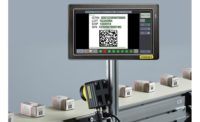NDT Back 2 Basics
How the Internet of Things and Cloud-Based Apps Are Changing NDT Inspections
It enables new tools that can transform the inspection process.

Consumer products have been transformed by the Internet of Things (IoT), the ability of smart connected devices to communicate and share information with each other. Now, IoT technology is expanding to NDT maintenance inspections and manufacturing QA/QC. This connectivity is not limited to cutting-edge inspection instruments. Even the workhorses of many corrosion inspection applications, ultrasonic thickness gages, are being upgraded with optional wireless connectivity to make them compatible with Industry 4.0.
When inspection equipment can connect to the cloud, it enables new tools that can transform the inspection process. Whenever decisions can be made using relevant information more quickly, it’s an advantage. The flow of information from connected inspection equipment to a data analyst in the office can improve the inspection workflow while speeding up the analysis process.
Current Challenges
For inspections using a thickness gage, handwriting the results was common before the advent of digital data loggers. Some companies still have inspectors hand write data onto isometric drawings of the asset being inspected to link the data with a specific condition monitoring location (CML). However, any time numbers are recorded by hand, there’s a potential for error. And handwritten results, although easy, are time-consuming since the readings must be transcribed into a formal report or entered into a database for record keeping, creating additional opportunities for error.
Even for gages with digital data recorders, there are still challenges. For one, the data has to be transferred off the device using a cable or by removing the memory storage card and transferring it to a PC or laptop. To do this, the gage may have to be removed from the field and the analyst has to wait until the inspection is complete to review the data. If there’s an error requiring a re-test, it adds more time and cost to the overall inspection.
To transfer, organize, and archive the thickness measurement data requires a compatible interface program. Many companies developed their own inspection data management systems (IDMS) out of necessity. Today, IDMS programs are typically expensive and often require additional charges for software upgrades. Since different owner/operators often use different IDMS programs, it can be difficult and expensive for inspection companies to stay compatible.
How the IoT and the Cloud Are Improving Thickness Gage Inspections
Connected thickness gages backed by cloud-based software offer advantages over the current system. The same files currently being transferred to an IDMS program can be wirelessly uploaded to a cloud application directly from the gage.
With wireless connectivity, users can create and manage projects from the office and deploy tasks to an inspector working almost anywhere in the world. An inspector in the field can connect their gage to a mobile hotspot or wireless local area network (WLAN) and download the files they need for the inspection directly to their device. Then, the inspector can take all necessary measurements and upload the data to the cloud where a data analyst can immediately review, enabling faster decision making. Since the data is kept in a digital format at all times, the need for handwritten results is eliminated, reducing the impact of human error.
From the cloud application, analysts can review data immediately. Based on the data’s quality, files can be re-deployed to an inspector if a re-test is required or exported in a variety of formats. Once checked and confirmed, the data can be uploaded into an IDMS program for statistical analysis and updating the asset’s mechanical integrity.
All the benefits described above are available now using wireless-enabled inspection equipment and cloud programs with inspection management apps. But this is just the beginning of how the IoT will transform NDT inspections.

By adding the 38-Link adaptor to this thickness gage, it is possible to make it a wireless instrument through either Bluetooth or WLAN
The Future of NDT Is in the Cloud
Currently in development are programs that will empower inspectors with new tools that will make their jobs easier.
New cloud-based inspection apps will enable users to transmit readings wirelessly from their thickness gage to digital isometric drawings instantly, giving the inspector clear visibility to the CML and the ability to capture the reading digitally. If an inspector sees something of interest while in the field, their tablet’s camera will be able to be used to add a photo to enable real-time collaboration with a supervisor back in the office. All the data collected in the field can easily be generated into a final report and sent for approval and signatures. The collected data, from digital drawings with thickness readings to inspector notes to images captured on a tablet, can be converted into traceable formats and uploaded back to an IDMS program so that it’s searchable in the future.
Conclusion
The rapid emergence of IoT devices and cloud applications is beginning to change the way industrial inspections are performed and how data are managed, but it’s just the beginning. As cloud-based applications become more prevalent in the NDT industry, the results will be enhanced data integrity, a reduced need for re-tests, and less time to complete an inspection. For developments and NDT equipment manufacturers, the key to progress is listening to industry feedback and having collaborative discussions with all stakeholders on how to move the industry forward using emerging technologies. NDT
Looking for a reprint of this article?
From high-res PDFs to custom plaques, order your copy today!





